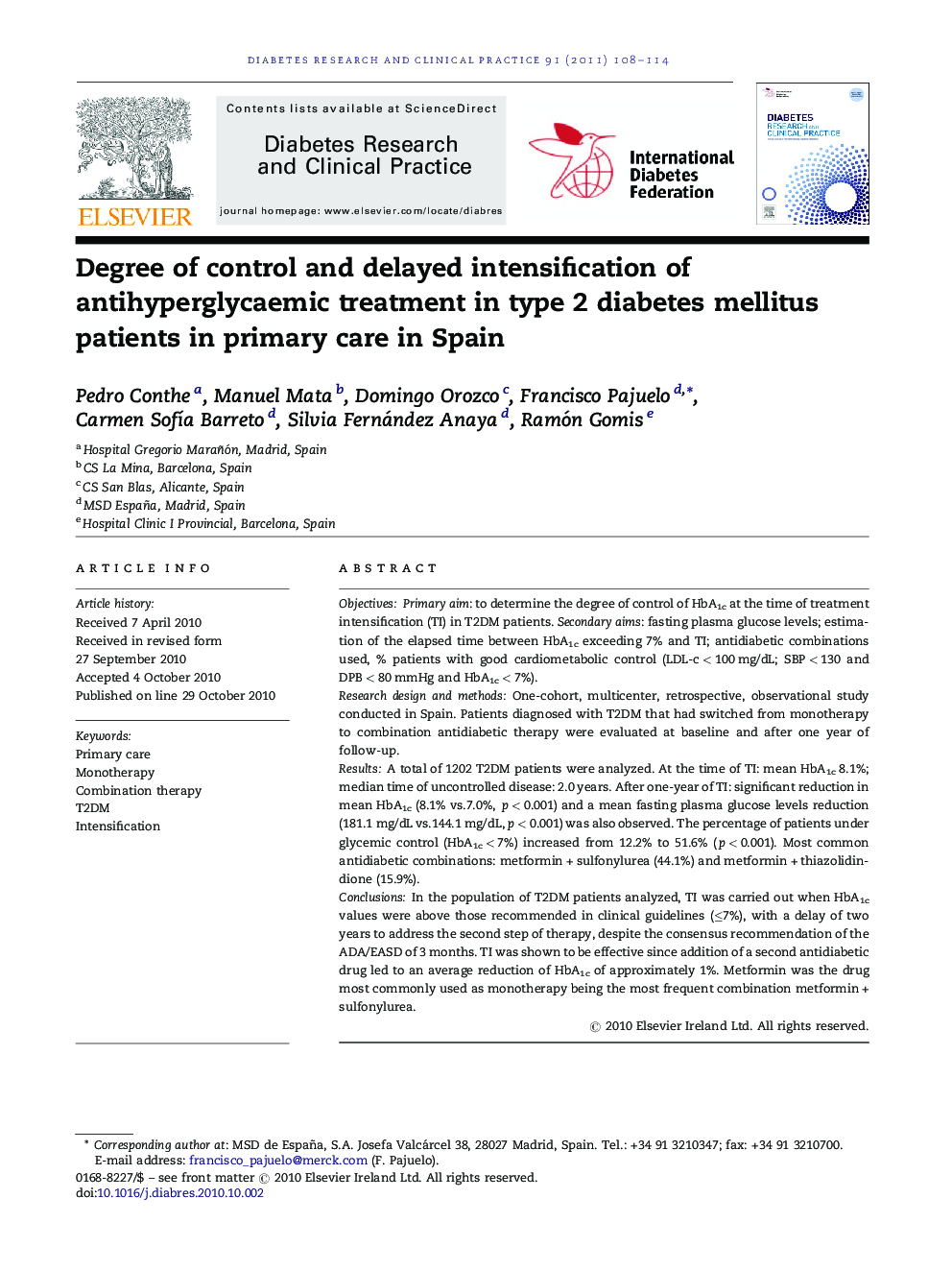| کد مقاله | کد نشریه | سال انتشار | مقاله انگلیسی | نسخه تمام متن |
|---|---|---|---|---|
| 2797297 | 1155643 | 2011 | 7 صفحه PDF | دانلود رایگان |

ObjectivesPrimary aim: to determine the degree of control of HbA1c at the time of treatment intensification (TI) in T2DM patients. Secondary aims: fasting plasma glucose levels; estimation of the elapsed time between HbA1c exceeding 7% and TI; antidiabetic combinations used, % patients with good cardiometabolic control (LDL-c < 100 mg/dL; SBP < 130 and DPB < 80 mmHg and HbA1c < 7%).Research design and methodsOne-cohort, multicenter, retrospective, observational study conducted in Spain. Patients diagnosed with T2DM that had switched from monotherapy to combination antidiabetic therapy were evaluated at baseline and after one year of follow-up.ResultsA total of 1202 T2DM patients were analyzed. At the time of TI: mean HbA1c 8.1%; median time of uncontrolled disease: 2.0 years. After one-year of TI: significant reduction in mean HbA1c (8.1% vs.7.0%, p < 0.001) and a mean fasting plasma glucose levels reduction (181.1 mg/dL vs.144.1 mg/dL, p < 0.001) was also observed. The percentage of patients under glycemic control (HbA1c < 7%) increased from 12.2% to 51.6% (p < 0.001). Most common antidiabetic combinations: metformin + sulfonylurea (44.1%) and metformin + thiazolidindione (15.9%).ConclusionsIn the population of T2DM patients analyzed, TI was carried out when HbA1c values were above those recommended in clinical guidelines (≤7%), with a delay of two years to address the second step of therapy, despite the consensus recommendation of the ADA/EASD of 3 months. TI was shown to be effective since addition of a second antidiabetic drug led to an average reduction of HbA1c of approximately 1%. Metformin was the drug most commonly used as monotherapy being the most frequent combination metformin + sulfonylurea.
Journal: Diabetes Research and Clinical Practice - Volume 91, Issue 1, January 2011, Pages 108–114